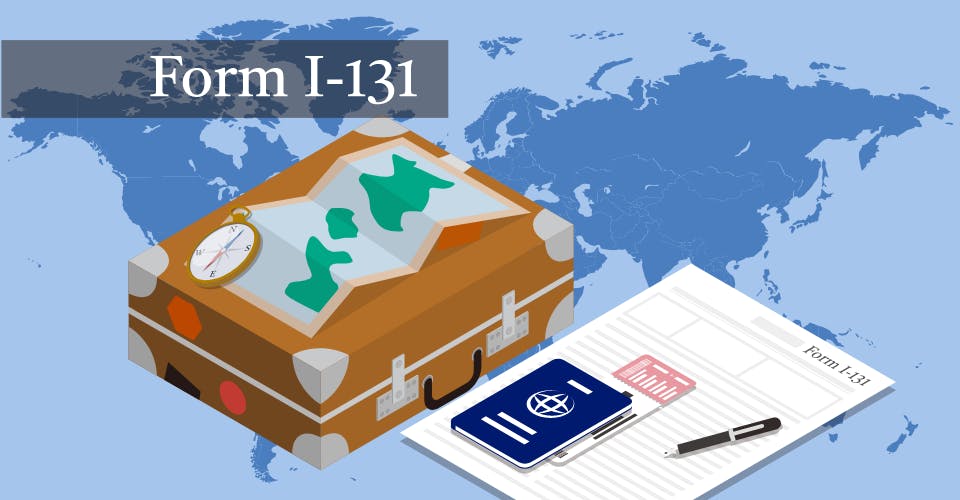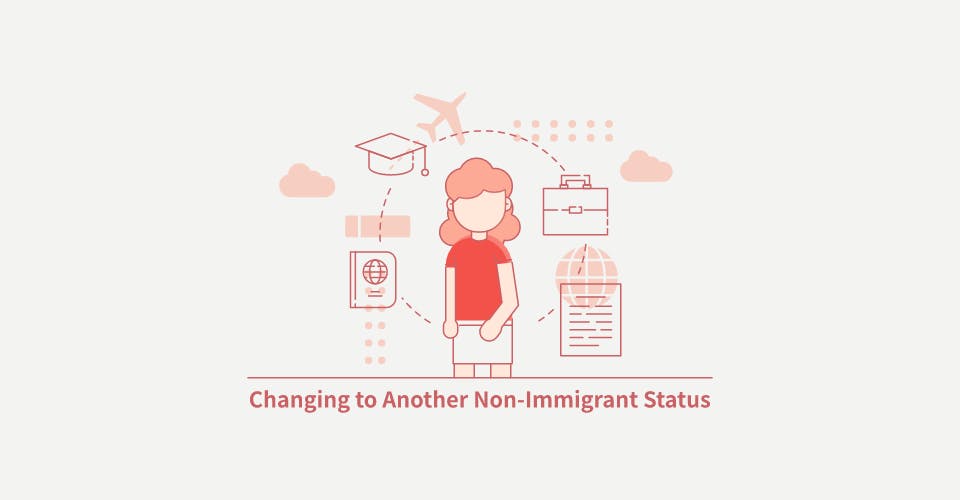The I-131 application for travel document is a USCIS document that is principally used for non-citizens residing in the United States to be able to travel internationally and return to the U.S. without having any problems. The actual travel document that is issued to some non-citizens, such as those who have approved refugee status, looks like a passport-style booklet that reads “Travel Document” with a seal from the Department of Homeland Security in the middle of the cover page.
Filing Fees
The filing fee for a re-entry permit (for green card holders) is $575. A biometrics fee of $85 is required for applicants ages 14-79.
The fee for a Refugee Travel Document for an applicant 16 and up is $135. The fee for a child younger than 16 is $105.
What you need to know to fill out I-131
The I-131 application asks applicants to define their current status under Part 2. Questions 1a-1f asks whether the individual is one of the following:
1. A permanent resident or conditional resident of the United States (in the case of a conditional marriage green card) who is applying for a re-entry permit.
2. A non-citizen who holds refugee or asylee status, and is applying for a Refugee Travel Document.
3. An LPR as a direct result of a refugee or asylee status, and applying for a Refugee Travel Document.
4. A non-citizen who is applying for an Advance Parole Document allowing them to return to the U.S. after temporary foreign travel.
5. A non-citizen residing in a foreign country applying for an advanced parole document.
6. Applying for an advanced parole document on behalf of a person who is outside the U.S.
Part 3 asks applicants to state the details of the trip they will be taking (if planning on leaving the U.S.), such as the expected length of the trip and the date of intended departure. This section also asks applicants where they would like to have their travel document sent, for example, their domestic U.S. address or a U.S. embassy or consulate they can pick it up at once they are traveling abroad.
Part 4 asks applicants what the purpose of their trip is. Again, this will depend on the nature of the applicant’s status in question, and whether or not they need a re-entry permit based on their situation.
Who needs a re-entry permit?
Oftentimes having a green card and living in the United States does not guarantee that you will be able to travel internationally without any concerns. In one vein, your permanent resident card (green card) becomes technically invalid according to the DHS if you are absent from the U.S. for one year or more. In addition, your LPR status can be considered “abandoned” if you take up residence in another country. A re-entry permit helps to establish that you did not intend to abandon your status, while also allowing green card holders to be able to re-enter the U.S. without obtaining a returning resident visa. In general, applying for a re-entry permit via the I-131 is a good idea for LPRs of the United States if they feel they are going to have issues with CBP officers upon returning to the United States. Re-entry permits are valid for 2 year periods.
Who needs a Refugee Travel Document?
Refugees and asylees, or legal permanent residents that received a green card via their refugee circumstance, might want to apply for a refugee travel document. This document, as pictured above, is approved via the I-131 form as well, but suits a different purpose than a re-entry permit. The refugee travel document helps refugees travel internationally without needing to get an additional visa. The travel document, which looks like a U.S. passport, can help refugees travel on different airlines, and also take temporary international trips with ease.
Most refugees do not choose to return to the country they were persecuted in, and it is advised by legal experts to not do this, as seeking re-entry to the United States after such a trip might present difficulties.
Who needs an Advanced Parole Document?
Another final reason to file an I-131 Travel Document with the USCIS is for the purpose of an advanced parole document. Parole, as previously covered, allows non-citizens to physically enter the United States, usually for a humanitarian or public benefit reason. The “Advanced Parole Document”, which is not the same as a Refugee Travel Document, allows the individual in question to remain an applicant for admission while paroled and can be accepted by a transportation company (airline) in lieu of a visa in order to travel to the United States.
It should be noted that receiving this document puts individuals up to the discretionary judgment of a CBP officer once they arrive at a U.S. port of entry (similar to a visa holder passing through customs for one last interview at the border).
Questions about Form I-131? Don't hesitate to contact us at contact@visa2us.com.














